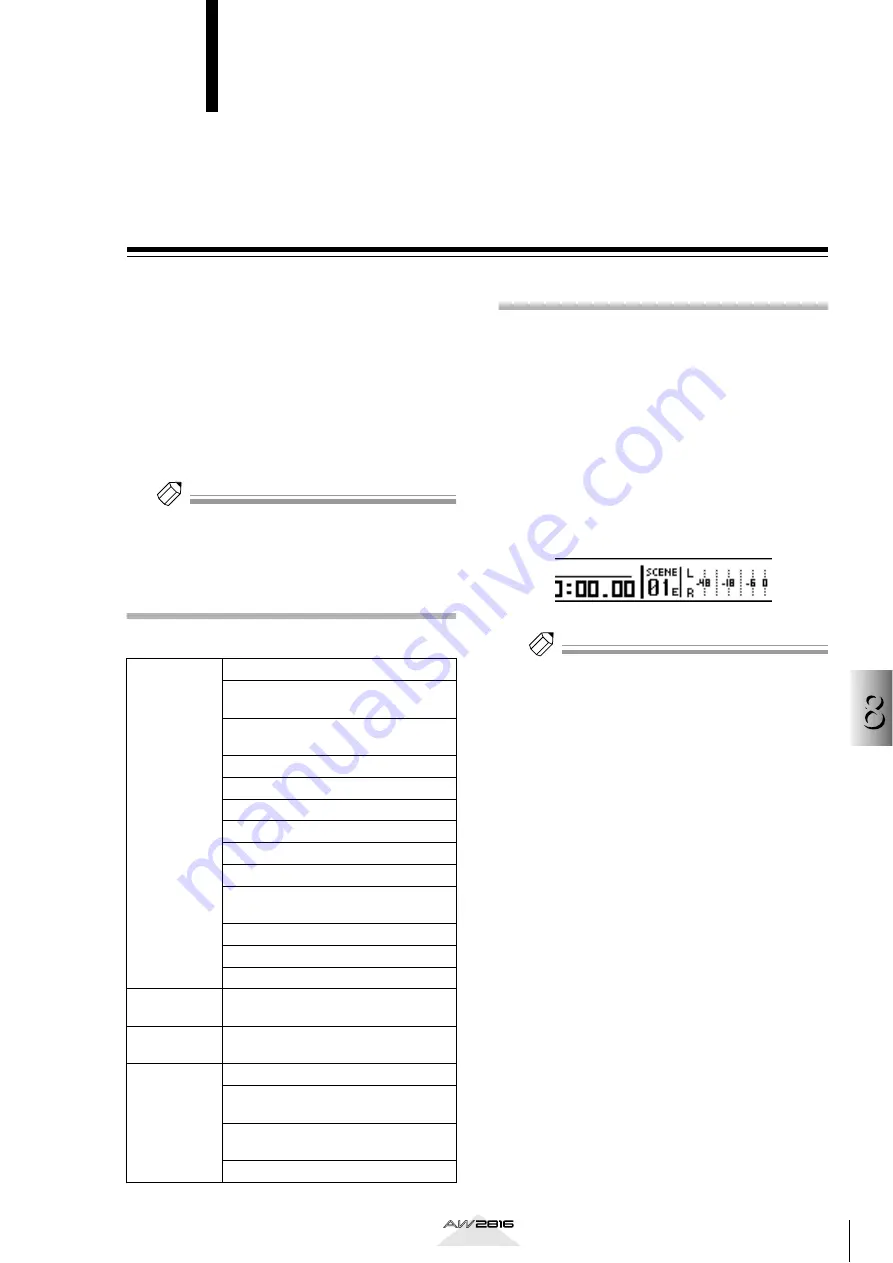
Scene memor
y oper
ations
8
127
Chapter
Operation section
8
Scene memory operations
This chapter explains scene memory functions and operation.
About scene memories
On the AW2816, the mix parameters of each channel,
the input patch and output patch settings, parameters
for effects 1/2, and various other settings can be col-
lectively assigned a name and stored in internal mem-
ory as a “scene.”
The memory area in which scenes are stored is called
“scene memory.” Scene memory lets you store up to
96 different scenes, and you can recall a desired
scene at any time by operations in the screen or by
key operations. The scene memory contents are saved
on the hard disk as part of the song.
Tip!
You can use automix (
→
P.133) to recall a scene, or
send program changes from an external device to
recall scenes on the AW2816 (
→
Parameters included in a scene
The following parameters are included in a scene.
About scene numbers
There are 97 scene numbers, 00–96. Scenes can be
stored in numbers 01–96. Scene number 00 is recall-
only, and contains a preset scene used to restore the
parameters to their default setting.
The currently-recalled scene number is always dis-
played in the SCENE area of the screen. When you
operate the keys of the SCENE MEMORY section, the
scene number of the currently-operated scene will be
displayed briefly at the right of the SCENE area.
If an “E” character is displayed at the right of the scene
number, this means that the current scene has been
edited since it was last recalled or stored.
Tip!
• The length of time that the scene name is displayed
at the right of the SCENE area can be adjusted if
desired. To do this, access the UTILITY screen/Pre-
fer.1 page ([UTILITY] key
→
[F2] key), and change
the value of the SCENE NAME DISPLAY TIME set-
ting (1–9 seconds).
• You can also make settings so that the scene name is
not displayed when you operate the keys of the
SCENE MEMORY section. To do this, access the
UTILITY screen Prefer.1 page ([UTILITY] key
→
[F2]
key), and turn the AUTO SCENE NAME DISPLAY
setting OFF.
Mix parame-
ters
Fader positions of all channels
Send levels from each channel to AUX
buses 1–6
Master levels of AUX buses 1–6 and
buses 1–8
[ON] key settings of all channels
Attenuation settings of all channels
Phase settings of all channels
EQ settings of all channels
Pan settings of all channels
Routing settings of all channels
Fader group and mute group settings of
all channels
Pairing settings of all channels
Dynamics settings of all channels
Delay settings of all channels
Effect parame-
ters
Parameter settings for effects 1/2
MIDI remote
Status of Remote A–D faders (1–8) and
[ON] keys (1–8)
Other
Scene name
Settings of the SCENE screen/Fade Time
page
Settings of the PATCH screen/Patch In/
Patch Out pages
Insert effect settings of each channel
















































